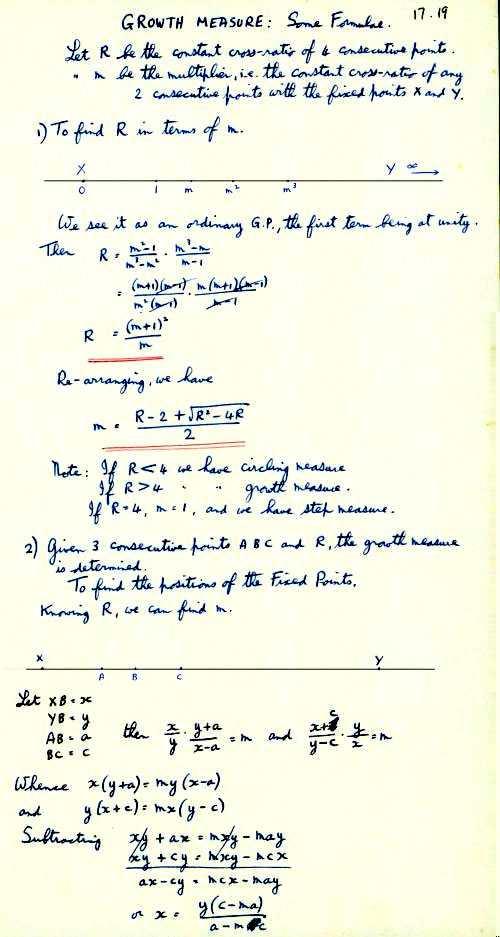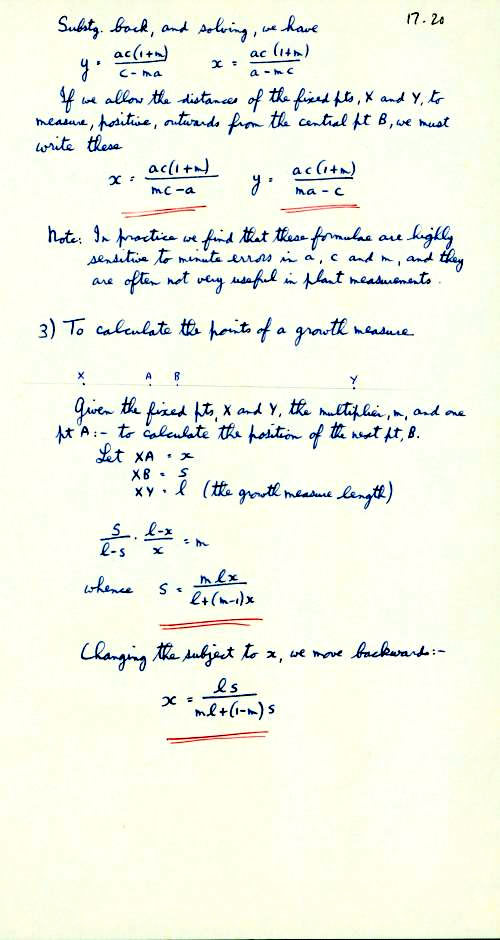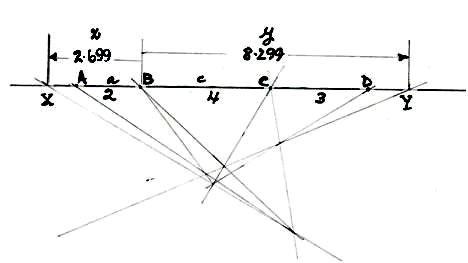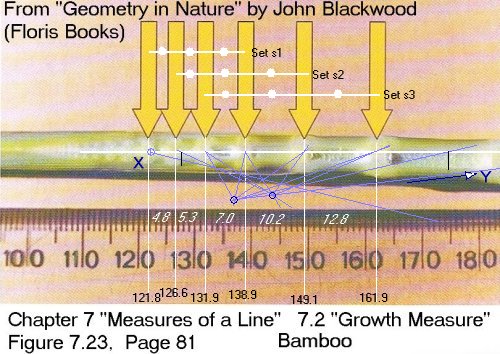Some Formulae
Scans from the papers of Lawrence Edwards
Examples of the formulae in use
(Images © G. Calderwood; the mathematical content is public domain.)


Plot points A, B, C and D on a line
- Calculate the positions of invariant points X and Y
- Plot these positions on the line
- Draw a line through X, and a line through Y
- Select a point on the line through Y
- Project plotted point B through the selected point on to the line through X
- Project plotted point C through the selected point on to the line through X
- These projected points are the directrices controlling the transformation
- Use the directrices, and points B and C, to locate points A and D of the transformation
If the positions of points X and Y have been correctly calculated and plotted, Points A and D should fall, by pure construction, on their plotted positions.

Given four points A, B, C & D on the line, and their spacings, we want the invariants, X & Y
a = AB = 2,
c = BC = 4,
d = CD = 3,
x = XB, y = BY.
We need the cross ratio, R, of the four points A, B, C & D to find the multiplier, m.
![]()
![]()
Now,
![]()
So,
![]()
![]()
![]()
![]()
These values are measured outwards from B, and tested by construction, above. The agreement of construction with calculation is excellent.
A Natural Example

We use John's arrows and ruler to obtain three sets of three intervals (My markings)
Results
Set a c d R m Type
s1
4.8
5.3
7.0 3.697
0.85+i0.51
circling
s2 5.3 7.0 10.2 3.914 0.96+i0.28 circling
s3 7.0 10.2 12.8 4.415 1.883 growth
We see that only the third set, s3, gives real invariants: the X invariant lies 16.86 mm (by John's ruler) left of the fourth arrow from the left.
Using the position of this invariant for the check-by-construction, we see that the positions of the nodes corresponding to s3 are accurately traced, but that other node-positions are not.
This suggests that we may have a measure that varies smoothly in "amplitude" along the length of the bamboo.
With thanks to John Blackwood.
His book, “Geometry in Nature”, is published by
Floris Books,
15, Harrison Gardens,
Edinburgh.
www.florisbooks.co.uk